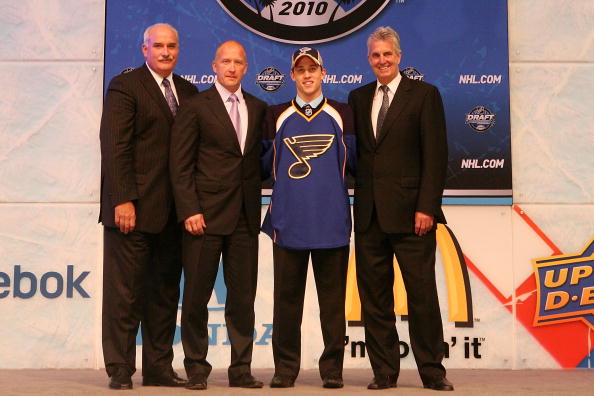Player development seems to always result in more questions than answers. How likely is it for a top pick to pan out? What makes a player a “steal”? Last Word On Hockey will be starting a new series on how to properly develop prospects from all different spots throughout the draft. This week’s piece involves top-15 picks and how they were used early in their careers.
Player Developments Of Top-15 Picks
In the span of 2005 through 2015, there were 21 total selections made between 11th overall and 15th overall on forwards playing in North America. Looking at all 21 forwards, they were split into different categories. Those categories were “Forwards Deemed NHL-Ready and Brought In Immediately,” “Forwards Near NHL-Ready and Brought In Immediately,” “Forwards Rushed Slightly,” “Forwards Rushed,” “Forwards Forced,” and “Too Much Patience.”
In my top-10 picks development series, there were five categories that represented players who were brought in early, whether they were deemed ready or not. There were also three categories that represented teams being patient. This time, there are five representing early NHL call-ups and just one representing patience.
Player Development Of Top-15 Picks: Early Call-Ups
Of those 21 players, only one was brought in directly after the draft, compared to nine top-10 picks. That said, we will throw in the additional eight who only needed one extra season before being brought up. In total, that is nine players who were called up to the NHL after their DY or DY+1 seasons. Those players were Mikhail Grigorenko, Dylan Larkin, J.T. Miller, Zemgus Girgensons, Sven Baertschi, Bryan Little, Zach Boychuk, Lawson Crouse, and Brandon Sutter.
In total, those nine forwards combined for an average of 0.503 wins above replacement (WAR) per season. Compared to that of the top-10 picks who were also brought in quickly (0.852 WAR per season), there is a stark drop-off. Additionally, these players averaged 15:14 time on ice per game, compared to the top-10’s 17:02 per game. In that role, the top-15 picks averaged 0.45 points per game, or about 37 points in an 82-game season. The WAR, points per game, and time on ice averages for those top-15 picks who made an early jump to the NHL reflect that of a good third-line forward.
The Rest Of The Bunch
As for the players who were not called up “quickly,” there were nine forwards who didn’t make an NHL impact until their DY+3 seasons or later. There were an additional three who never panned out at all. Those nine who were later call-ups were split into two groups: The DY+3 impacts and the DY+4 or later impacts. The players who made the jump in their DY+3 seasons were Jaden Schwartz, Jake DeBrusk, Max Domi, Zack Kassian, and Brendan Perlini.
Those five averaged 0.836 WAR per season, which is 0.333 WAR better than the aforementioned group of nine who were brought up sooner. That’s also just 0.016 WAR less than the top-10 guys brought in immediately. Additionally, they averaged 14:58 per game, and 0.46 points per game, or 38 points per season. These stats reflect that of a lower-end second-line forward and high-end third-line forward. These players ended up better than the players brought in sooner, as shown by the stats above.
Player Development In Prospects Given Extra Time
The four forwards who took until their DY+4 season or later to make an impact were Peter Holland, Michael Grabner, Radek Faksa, and Ryan O’Marra. Finally, the three forwards who never panned out, and won’t be included in the following averages, were Marek Zagrapan, Zach Senyshyn, and Kyle Beach.
Those four forwards averaged 0.109 WAR per season, which is really poor. They also averaged 13:23 per game, and 0.32 points per game, or 26 points in an 82-game season. Those stats reflect a good fourth-liner. Though, Grabner and Faksa heavily carried the weight of that assessment. Meanwhile, Holland and O’Marra were anchors. Still, at best, they were third-line forwards or high-end fourth-liners, and at worst, in the case of Holland and O’Marra, fringe NHLers.
In Conclusion
Similar to the top-10 picks, bringing prospects up to the NHL quickly generally didn’t stunt someone’s player development. However, giving players a little bit more patience and an extra year or two gets more out of the players. If anything, an extra year of player development in a lower level of hockey helps. Whether it is juniors, the NCAA or the AHL.
However, the time it takes for a player and team to come together and make the decision to make said player an NHLer only scratches the surface of player development. There are so many things that contribute, but that is a story for another day.
Coming up next: the player development of picks 16 through 30 overall. Or players selected in the second half of the first round. Stay tuned.
NHL stats via Hockey Reference, NHL analytics via Evolving Hockey






